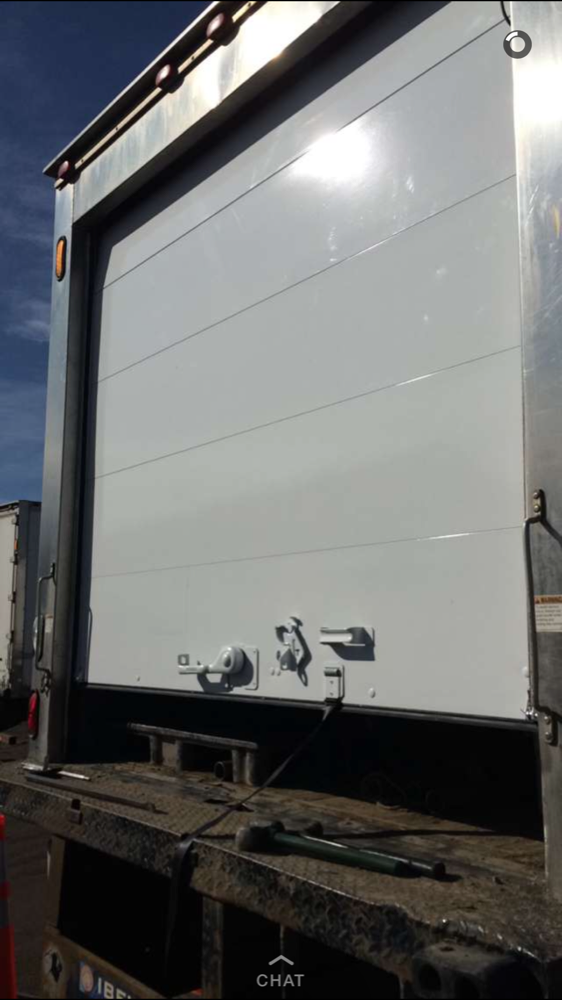The liftgate on a commercial truck, also known as a tailgate lift or hydraulic liftgate, is a mechanical device designed to assist with loading and unloading heavy cargo onto and off the truck’s cargo bed. It operates using hydraulics and is controlled either manually or electronically. Here’s how the liftgate on a commercial truck typically works:
1. Hydraulic System: The liftgate is powered by a hydraulic system, which consists of a hydraulic pump, hydraulic fluid reservoir, hydraulic cylinders, and control valves. The hydraulic system converts mechanical force into hydraulic pressure, allowing the liftgate to lift and lower heavy loads.
The liftgate hydraulic system is a crucial component that enables the operation of a liftgate on commercial trucks. It uses hydraulic principles to generate the force required to lift and lower heavy cargo and provide a controlled and efficient loading and unloading process. Here are the key elements and functions of the liftgate hydraulic system:
- 1. Hydraulic Pump: The hydraulic pump is the heart of the system. It is usually powered by the truck’s engine or a separate power unit and is responsible for generating hydraulic pressure. When the pump is activated, it draws hydraulic fluid from the reservoir and pressurizes it to a specific level.
- 2. Hydraulic Fluid Reservoir: The hydraulic fluid reservoir holds a supply of hydraulic fluid, typically hydraulic oil. The fluid is used as a medium to transfer force and pressure throughout the hydraulic system. It also helps dissipate heat generated during the operation of the liftgate.
- 3. Hydraulic Cylinders: Hydraulic cylinders are the actuators in the system that do the actual lifting and lowering of the liftgate. They are usually positioned vertically on each side of the liftgate and contain a piston that moves inside a cylinder barrel. The piston rod is connected to the liftgate’s platform.
- 4. Control Valves: Control valves are responsible for directing the flow of hydraulic fluid to and from the hydraulic cylinders. There are typically two main types of control valves used in liftgate hydraulic systems:
- Directional Control Valve: This valve determines the direction of fluid flow. When the valve is actuated, it directs the hydraulic fluid either to the cylinders to lift the platform or back to the reservoir to lower the platform.
- Flow Control Valve: This valve regulates the rate of flow of hydraulic fluid. It controls the speed at which the liftgate raises and lowers, ensuring smooth and controlled movements.
5. Hoses and Fittings: Hydraulic hoses and fittings connect the various components of the hydraulic system, allowing the hydraulic fluid to flow between the pump, cylinders, control valves, and reservoir. High-quality hoses and fittings are essential to ensure leak-free operation and system reliability.
6. Safety Features: Liftgate hydraulic systems often incorporate safety features to prevent accidents and protect both the cargo and operators. Common safety features include:
- Overload Protection: Some liftgates have overload sensors or systems that prevent lifting loads beyond the rated weight capacity.
- Pressure Relief Valves: Pressure relief valves are designed to release excess pressure in the system to prevent damage due to over-pressurization.
- Flow Control: Flow control valves mentioned earlier can also serve as safety features by regulating the speed of the liftgate’s movements to prevent sudden drops.
2. Control Panel: The liftgate is controlled by a control panel, which can be located on the liftgate itself or inside the truck’s cab. The control panel includes various buttons or switches that allow the operator to raise, lower, and control the liftgate’s movements.
3. Raise Function: To raise the liftgate, the operator activates the hydraulic pump using the control panel. The hydraulic pump pressurizes the hydraulic fluid, which is then directed to the hydraulic cylinders. As the pressurized fluid enters the cylinders, it causes the pistons inside to extend, pushing the liftgate platform upward.
4. Lower Function: To lower the liftgate, the operator activates the control panel again, but this time the hydraulic fluid is redirected out of the hydraulic cylinders, and the pistons retract. As the pistons retract, they allow the liftgate platform to lower gently to the ground.
5. Safety Features: Commercial truck liftgates are equipped with various safety features to prevent accidents and ensure safe operation. Some common safety features include:
- Safety Locks: Liftgates may have mechanical or automatic locks to secure the platform in the raised position, preventing accidental lowering during transport.
- Hydraulic Flow Control: The hydraulic system may have flow control valves that regulate the speed of the liftgate’s movements, preventing sudden drops or jolts.
- Safety Barriers: Some liftgates have barriers or gates on the sides to prevent cargo from accidentally falling off the platform.
6. Weight Capacity: Liftgates are rated for specific weight capacities, indicating the maximum load they can safely handle. It’s essential for operators to adhere to these weight limits to prevent overloading, which could damage the liftgate or compromise safety.
Overall, liftgates are valuable tools for commercial trucks, allowing for efficient loading and unloading of heavy cargo, especially when there is no access to loading docks or when handling large or bulky items. Their hydraulic operation and safety features make them reliable and widely used in the transportation industry.






